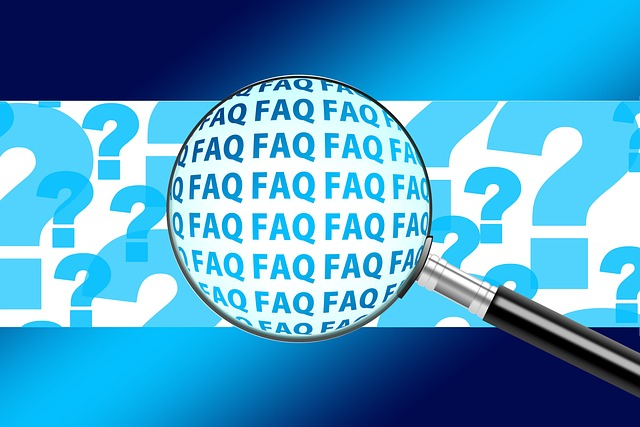What is a Disregarded Entity?
A disregarded entity is a business entity owned by a single individual. The income generated by this entity is not taxed separately. Instead, it is reported on the owner’s personal tax return, simplifying taxation for the owner.
The most common type of disregarded entity is a single-member LLC (Limited Liability Company). This legal structure provides liability protection while allowing the owner to report profits and losses on their personal tax return.
How do Disregarded Entities handle Business Taxes?
For federal income tax purposes, disregarded entities are not separate from their owners. The business income of a disregarded entity is reported on the owner’s federal tax return, which means that the owner includes the entity’s income, deductions, and credits on their personal tax return.
Owners of disregarded entities must adhere to specific filing requirements. They must ensure that they accurately report all income generated by the entity and meet all necessary tax obligations. Failure to comply with these requirements can result in penalties or legal consequences.
What types of businesses can be a Disregarded Entity?
Single-owner businesses have several options when choosing the entity structure, each with advantages and disadvantages.
Sole Proprietorship
A sole proprietorship can be considered a disregarded entity for tax purposes, meaning the business is not separate from its owner. This allows the owner to report business income and expenses on their personal tax return, simplifying the tax filing process. However, keeping accurate records and following all legal requirements is essential to maintain this status.
Single-Member LLC
A single-member LLC is a business structure with only one owner and limited liability protection. This means that the owner’s personal assets are generally protected from any business debts or liabilities. Single-member LLCs are popular among small business owners due to their simplicity and flexibility in taxation and management. This is the most common disregarded entity.
Single-Owner Corporation
A single-owner corporation registered as a C-corporation is considered a disregarded entity. However, if you structure it as an S-corporation, it’s taxed as a pass-through entity.
What are the benefits of a Disregarded Entity?
Disregarded entities offer simplified tax reporting processes, reducing administrative burdens for owners. The pass-through taxation feature allows profits and losses to flow directly to the owner’s personal tax return.
This structure provides liability protection similar to a corporation while maintaining the simplicity of a sole proprietorship. Owners benefit from legal protections without the complexities of separate entity filings.
The flexibility in structuring a disregarded entity allows owners to make decisions independently. They can easily manage operations and finances without needing approval from other shareholders or partners.
What are the drawbacks of a Disregarded Entity?
Disregarded entities can pose drawbacks for owners, particularly regarding liability protection. Owners may be personally liable for the entity’s debts and obligations, exposing their personal assets to risk. This lack of separation between the owner and the entity can be a significant concern.
Moreover, disregarded entities face limitations when it comes to raising capital. Unlike other types of entities, such as partnerships or corporations, they may find it challenging to attract investors or secure financing due to their structure. This can hinder growth opportunities and expansion plans.
In particular tax situations, disregarded entities can introduce complexity. Owners might encounter difficulties when navigating tax regulations and compliance requirements. Understanding how to handle credits, expenses, and deductions properly can become intricate, requiring careful attention to detail and potential professional assistance.
Disregarded Entity Pros & Cons
Pros:
- Simplified tax reporting processes.
- Pass-through taxation for owners.
- Flexibility in decision-making and operations.
Cons:
- Limited liability protection for owners.
- Challenges in raising capital.
- Complexities in certain tax scenarios.
How do I structure my business as a Disregarded Entity?
To establish a business as a disregarded entity, you will need to follow these steps:
Step 1 – Choose a Business Structure
Before establishing your business as a disregarded entity, you must choose a business structure that allows for this classification. Typically, this includes sole proprietorships or single-member LLCs.
Step 2 – File the Appropriate Forms
Depending on the type of business structure you have chosen, you may need to file certain forms with the IRS to establish your business as a disregarded entity. For example, if you have a single-member LLC, you must file Form 8832 to elect disregarded entity status.
Step 3 – Maintain Separate Records
Even though your business is considered a disregarded entity, it is essential to maintain separate records for your business activities. This includes keeping separate bank accounts, financial statements, and other documentation to distinguish your business from your personal finances clearly.
Step 4 – Comply with State Regulations
In addition to federal requirements, you must also comply with any state regulations regarding disregarded entities. This may include filing additional forms or paying certain fees to maintain your business status.
Frequently Asked Questions
Here are the most common questions about disregarded entities.
What’s the difference between a Disregarded Entity and a Pass-Through Entity?
A disregarded entity and a pass-through entity are both types of business entities that do not pay taxes at the entity level. However, they differ in their legal structure and how they are treated for tax purposes.
A disregarded entity is typically a single-member limited liability company (LLC) that is not recognized as a separate entity from its owner for tax purposes. This means that the income and expenses of the disregarded entity are reported on the owner’s personal tax return. In essence, the entity is “disregarded” for tax purposes.
On the other hand, a pass-through entity, such as a partnership or an S corporation, is a separate legal entity that does not pay taxes at the entity level. Instead, the entity’s income, deductions, credits, and losses “pass through” to the owners, who report them on their individual tax returns. This allows the owners to avoid double taxation on the same income. They are then responsible for employment taxes and excise taxes.
The main difference between a disregarded entity and a pass-through entity lies in their legal recognition and how they are treated for tax purposes. While a disregarded entity is not considered a separate entity from its owner, a pass-through entity is a distinct legal entity that passes its income through to its owners for tax purposes.
Does a Disregarded Entity get an EIN?
A disregarded entity does not typically require an Employer Identification Number (EIN). Instead, the owner’s Social Security Number is commonly used for tax purposes. This simplifies the process as the business is treated as an extension of the owner.
However, you can still choose to get an EIN, even if you don’t have employees. An EIN may simplify other aspects of running a business. For example, you might need an EIN to open a business bank account, establish trade credit, or apply for a small business loan.
Is a single-member LLC automatically a Disregarded Entity?
A single-member LLC is typically classified as a disregarded entity by default, according to state law. This means the business entity and the owner are considered the same for tax purposes. The IRS treats the LLC as if it does not exist, and all profits and losses pass through to the individual owner’s tax return.
However, exceptions exist where a single-member LLC may not be treated as a disregarded entity. For instance, if the LLC elects to be taxed as a corporation or has multiple members, it would not qualify for disregarded entity status. In these cases, the LLC must file its own tax return separately from the owner’s personal taxes.
Can a multi-member LLC be a Disregarded Entity?
A multi-member LLC typically cannot be classified as a disregarded entity for tax purposes. This is due to the general rule that disregarded entity status is reserved for entities with a single owner. The Internal Revenue Service (IRS) automatically treats single-member LLCs as disregarded entities, simplifying tax reporting.
Having a single owner is crucial for obtaining disregarded entity status because it ensures that all income, deductions, and credits flow directly to the individual owner’s tax return. In contrast, multi-member LLCs are usually treated as partnerships by default for federal tax purposes.
If a multi-member LLC wishes to change its tax classification, it can elect to be taxed as a corporation by filing Form 8832 with the IRS. Alternatively, if the LLC meets specific criteria, it can choose to be taxed as an S corporation by filing Form 2553. Both options provide different tax benefits and implications compared to being treated as a partnership or disregarded entity.
Do Disregarded Entities pay payroll tax?
Self-employed individuals operating as disregarded entities are still responsible for paying the employee and employer portions of payroll taxes, including Medicare and Social Security. This means they must cover the total amount of these employment taxes themselves without the benefit of an employer contributing a portion. However, they are typically not required to pay state unemployment tax. Other employment tax obligations may vary from state to state.
Can I change my classification to a Disregarded Entity?
Yes, changing a business’s classification to a disregarded entity is possible. To do so, the business must be eligible for this classification, typically a single-member limited liability company (LLC) or a sole proprietorship.
The process involves filing Form 8832 with the IRS, allowing the business to be treated as a disregarded entity for tax purposes. This form must be submitted within 75 days of the desired effective date of the classification change.
The business owner should also ensure that all necessary information is provided on the form and that any required fees are paid. It’s essential to consult with a tax professional or legal advisor to ensure the process is completed correctly and complies with IRS regulations.
What Does a Disregarded Entity Mean – Final Thoughts
Understanding what a disregarded entity is and how it works is crucial for managing your business effectively. From handling taxes to structuring your business, the benefits and drawbacks of this classification impact your financial obligations significantly.
Grasping the implications of being classified as a disregarded entity can streamline your tax responsibilities and overall business structure. Remember, seeking professional advice tailored to your specific situation is always wise to ensure compliance and maximize the advantages available to you.
Contact us if you have more questions about disregarded entities or to apply for a small business loan. Our alternative business funding experts can help you find the best financing options for your business structure.


















